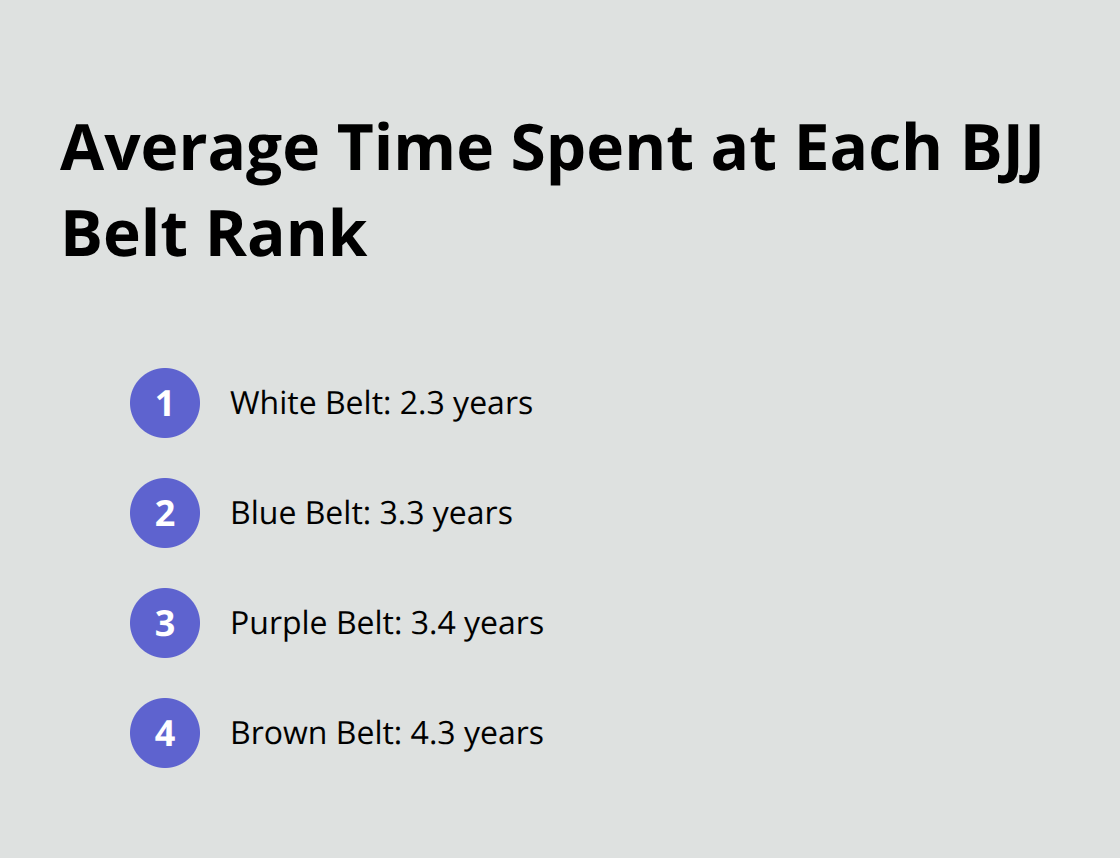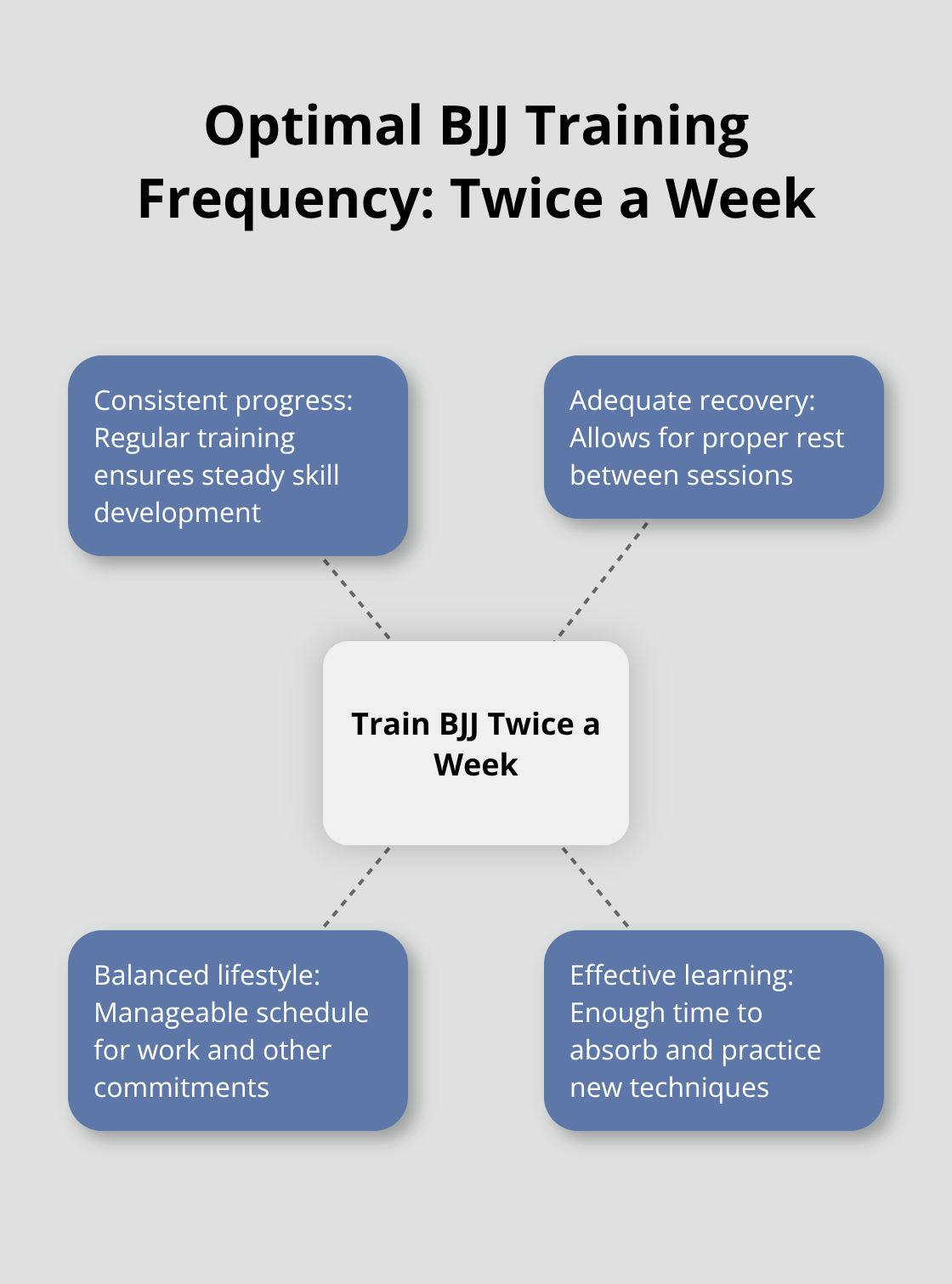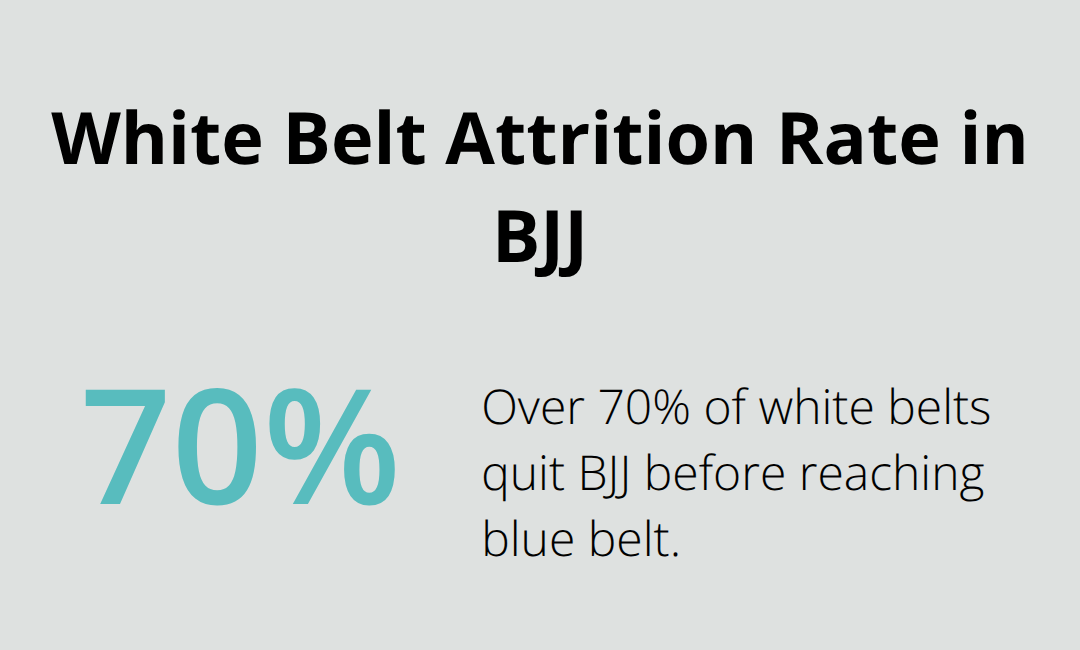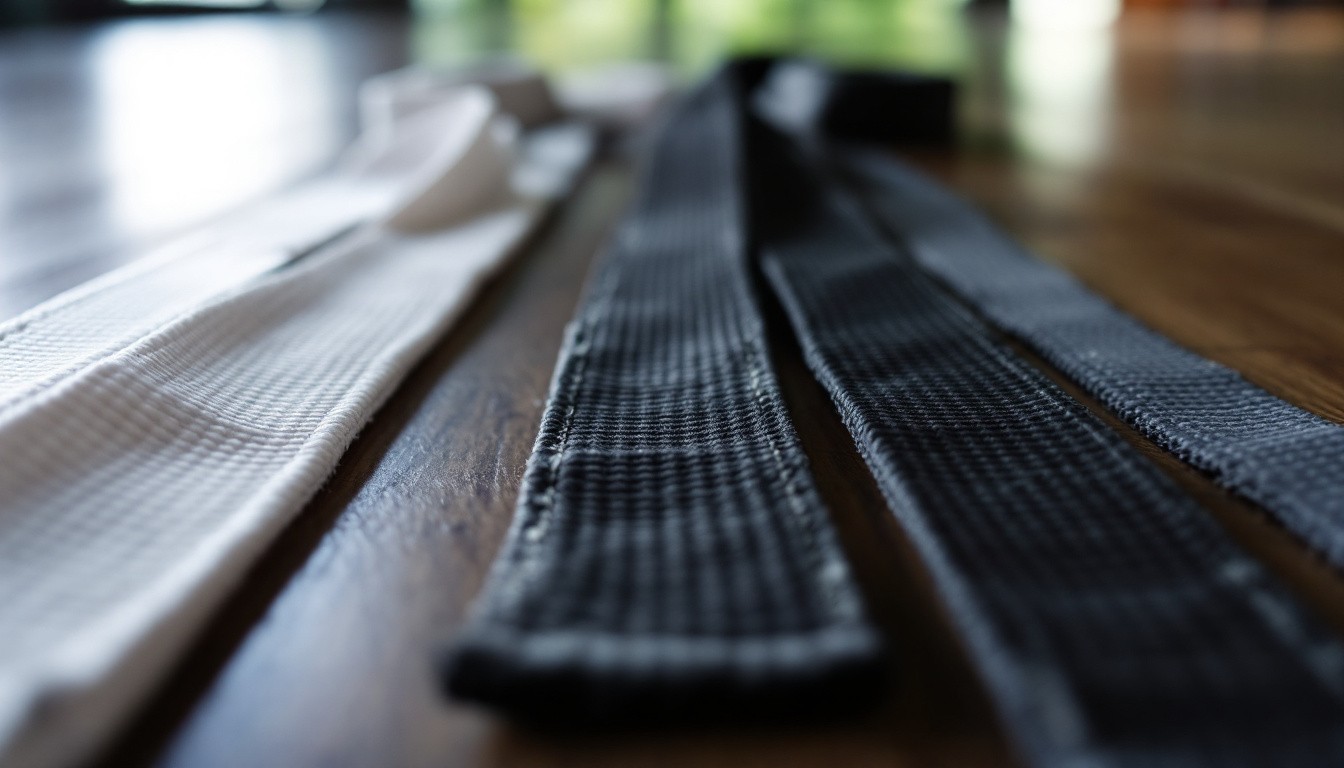At Jiu jitsu, we often get asked about the timeline for Jiu Jitsu belt progression. It’s a common question, but the answer isn’t always straightforward.
The journey through BJJ’s belt system is unique for every practitioner, influenced by various factors. In this post, we’ll explore the typical timeframes, strategies to accelerate your progress, and how to overcome common plateaus along the way.
How Long Does It Take to Progress in BJJ?
Brazilian Jiu-Jitsu (BJJ) practitioners often wonder about the time required to advance through the belt ranks. At Souza Grappling Co., we understand this curiosity and aim to provide insights into the typical progression timelines and factors that influence advancement.
The BJJ Belt System
BJJ uses a five-tier adult belt system: white, blue, purple, brown, and black. Each belt signifies a milestone in a practitioner’s journey, with white belts as beginners and black belts as experts.
Average Timeframes for Belt Progression
A comprehensive study by Gold BJJ (involving 1,948 BJJ practitioners) revealed surprising statistics about belt progression:
- White Belt: 2.3 years
- Blue Belt: 3.3 years
- Purple Belt: 3.4 years
- Brown Belt: 4.3 years (estimated based on total training time to black belt)
These figures highlight the dedication required to advance in BJJ.

Factors Influencing Progression Speed
Several elements can affect how quickly you move through the ranks:
- Training Frequency: Practitioners who train 4-6 days a week often progress faster.
- Competition Experience: Tournaments accelerate skill development and expose you to advanced techniques.
- Physical and Mental Conditioning: Overall fitness and mental approach significantly impact advancement.
- Instructor’s Teaching Style: Different instructors may have varied promotion criteria.
- Consistency and Dedication: Regular attendance and active participation in classes are essential for steady progress.
Overcoming Progression Challenges
Advancement in BJJ isn’t always smooth. You might encounter plateaus or feel stuck at certain belt levels. To overcome these challenges:
- Set specific, achievable goals (e.g., mastering a particular technique each month)
- Seek feedback from instructors and training partners
- Supplement your training with instructional videos or books
- Try cross-training in complementary martial arts or strength training
The Importance of Personal Growth
While belt color serves as a visible marker of progress, it’s crucial to focus on personal growth and skill development. At Souza Grappling Co., our expert trainers create a supportive environment that encourages continuous learning and improvement, regardless of your current rank.
As you embark on your BJJ journey, remember that consistency and dedication will ultimately determine your success. The next section will explore strategies to accelerate your progress and make the most of your training time.
How to Accelerate Your BJJ Progress
Maximize Your Mat Time
Consistency propels progress in BJJ. Training twice a week, with adequate rest days in between, is a commonly recommended frequency for individuals seeking progress in Brazilian Jiu-Jitsu. This includes both drilling and live sparring.

To optimize your mat time:
- Arrive early for proper warm-up
- Stay after class to refine techniques
- Find a dedicated training partner for extra practice
Embrace Competition
Tournaments fast-track improvement. Competition pressure accelerates learning and exposes you to diverse techniques and strategies.
Tips for competition success:
- Start competing as a white belt
- Set realistic tournament goals
- Analyze your matches to identify improvement areas
Supplement Your Training
Off-the-mat study and additional training boost progress significantly.
Effective supplementary activities include:
- Watching instructional videos and match footage
- Reading BJJ books and articles
- Strength and conditioning workouts (tailored for BJJ)
- Yoga or flexibility training to improve mobility
Seek Feedback and Mentorship
Regular feedback from instructors and higher-ranked training partners accelerates improvement. Don’t hesitate to ask for specific feedback on your techniques and overall progress.
Find a BJJ mentor to guide your development and help you avoid common pitfalls.
These strategies will propel your BJJ journey forward. However, progress isn’t always smooth. Let’s explore common plateaus in BJJ progression and how to overcome them.
Overcoming BJJ Plateaus
White Belt Challenges
The transition from white to blue belt presents the first major plateau. Many new practitioners struggle with information overload and physical demands. To overcome this:
- Master fundamental techniques before attempting advanced moves.
- Develop a consistent drilling routine to ingrain basic movements.
- Embrace discomfort in sparring sessions to accelerate learning.
A study found that over 70% of white belts quit BJJ before reaching blue belt. Don’t become part of this statistic. Persistence will propel you forward.

Blue Belt Roadblocks
The blue belt phase is notorious for its challenges. Many practitioners experience a motivation dip or feel stuck. To push through:
- Set specific, measurable goals for each training session.
- Explore different aspects of BJJ (such as leg locks or wrestling).
- Take on a teaching role to solidify your knowledge.
A survey by Grappling Insider revealed that blue belts who competed regularly progressed 30% faster to purple belt compared to those who didn’t.
Advanced Belt Hurdles
As you progress to purple, brown, and black belts, plateaus become more subtle but equally challenging. To continue advancing:
- Develop a specialized game that sets you apart.
- Cross-train in complementary martial arts or strength training.
- Attend seminars and seek out high-level training partners.
An IBJJF study showed that black belts who regularly taught classes reported a 40% increase in their own skill development.
Mental Barriers
Plateaus often stem from psychological factors. To overcome mental blocks:
- Practice visualization techniques to improve performance.
- Maintain a growth mindset, viewing challenges as opportunities.
- Seek support from training partners and instructors when motivation wanes.
Injury Recovery
Injuries can create significant plateaus in BJJ progression. To bounce back:
- Follow medical advice and rehabilitation protocols strictly.
- Use recovery time to study BJJ theory and match footage.
- Gradually reintegrate into training, focusing on technique over intensity.
At Souza Grappling Co., our expert trainers help practitioners navigate these challenges and maintain progress in their BJJ journey.
Final Thoughts
Jiu Jitsu belt progression reflects a unique journey for each practitioner. Your advancement depends on factors like training frequency, competition experience, and personal commitment. Regular practice, supplemented by tournaments and off-mat study, will accelerate your growth in Brazilian Jiu Jitsu (BJJ).
Challenges and plateaus in BJJ offer opportunities for deeper learning and self-discovery. Each promotion represents not just technical skill, but also mental fortitude and problem-solving abilities. Focus on personal growth rather than belt color to truly appreciate your progress in this martial art.
At Souza Grappling Co., we provide a supportive environment for your BJJ journey. Our trainers offer personalized feedback to guide you through each stage of development. Whether you’re a beginner or an advanced practitioner, our facility offers the perfect setting for your growth in Jiu Jitsu.




